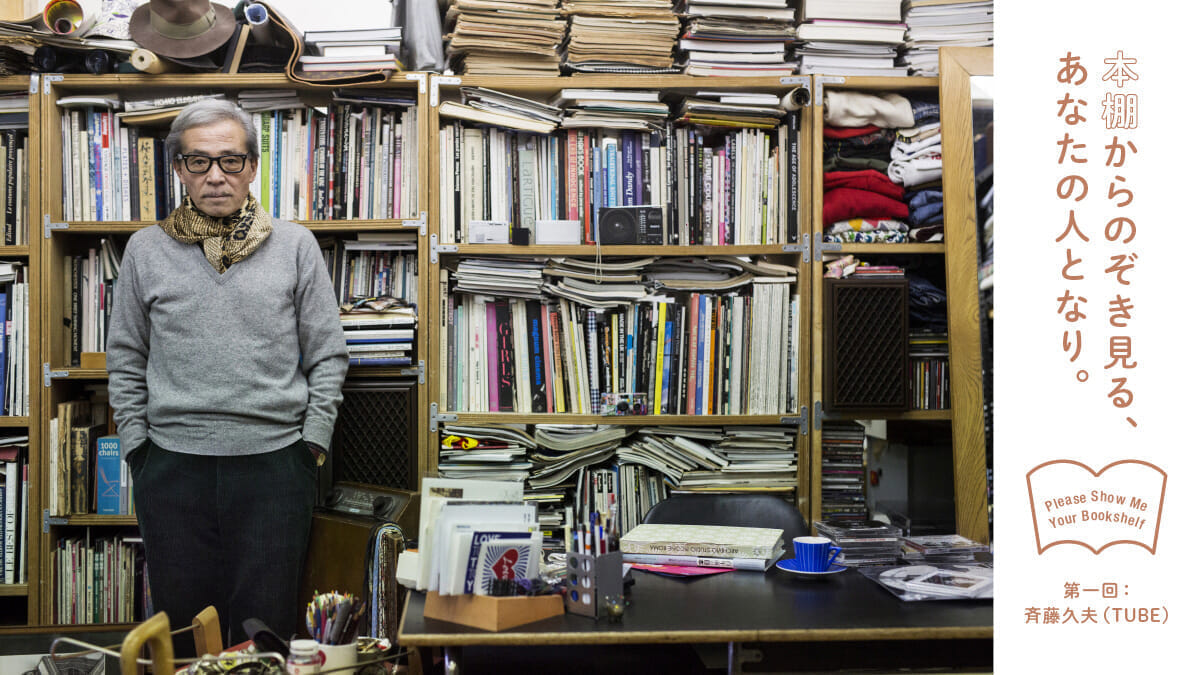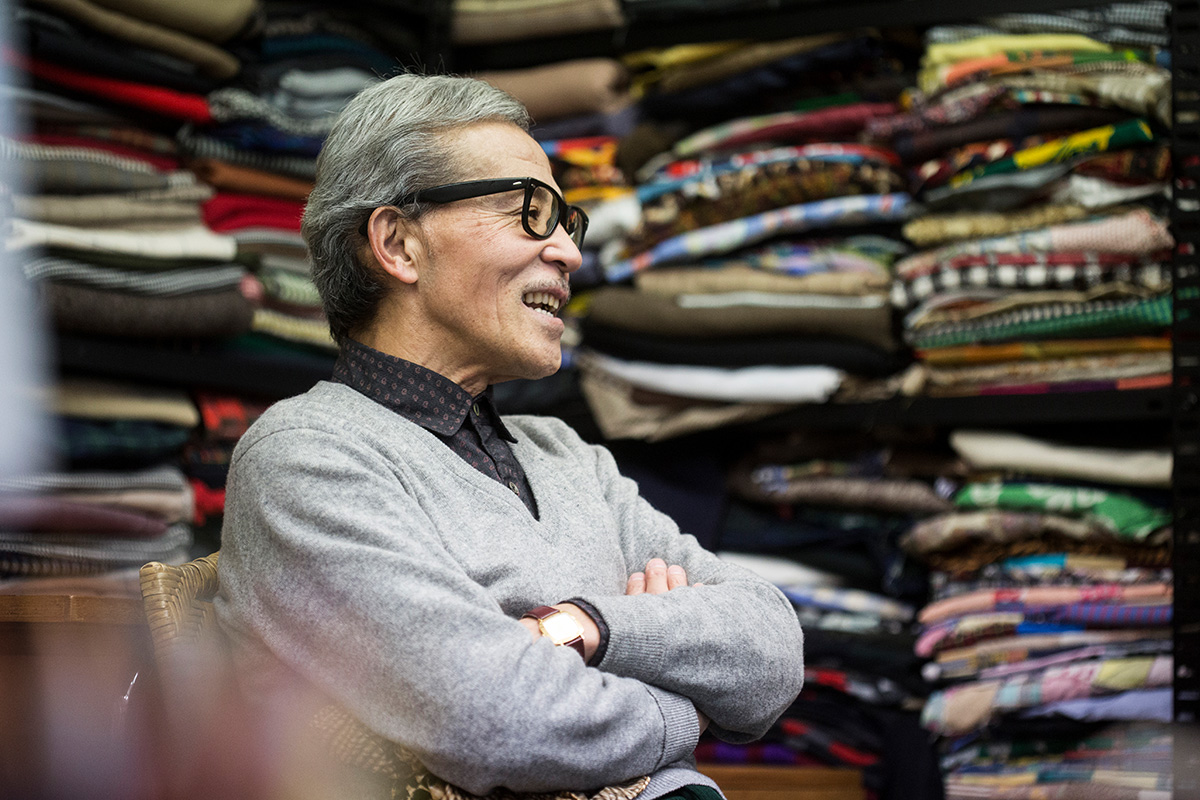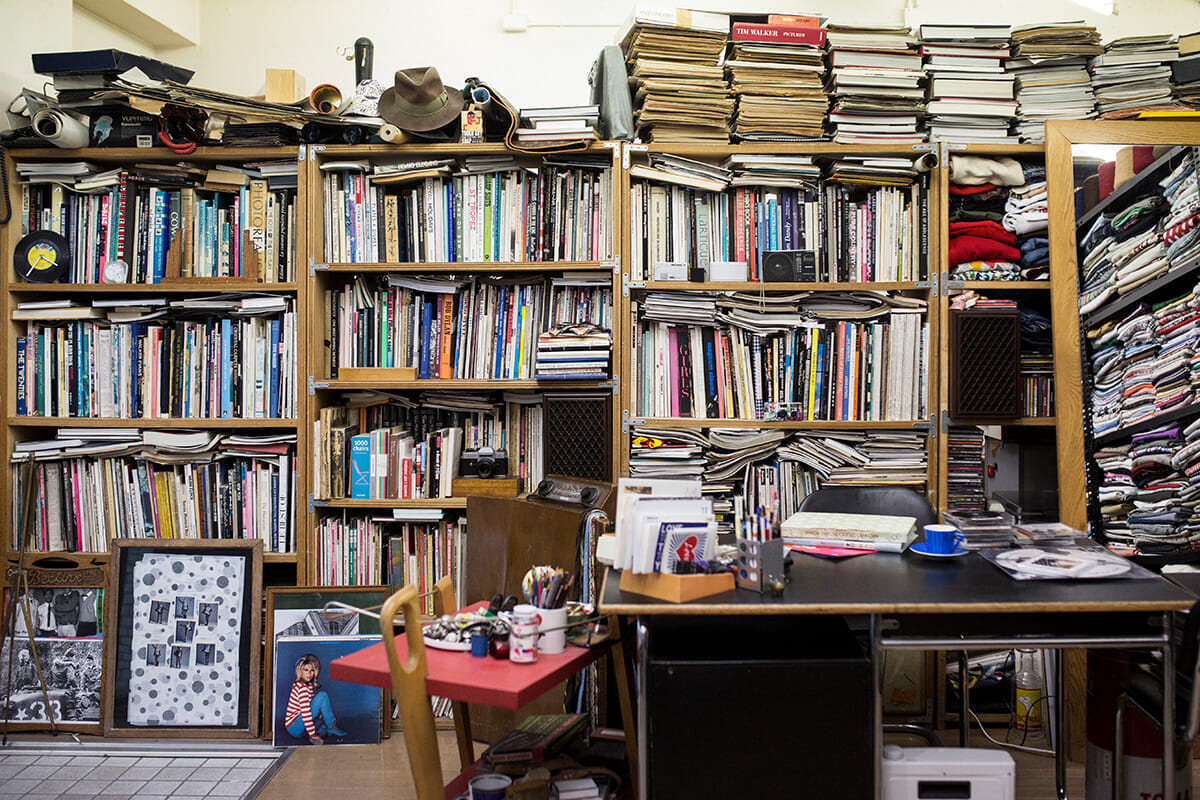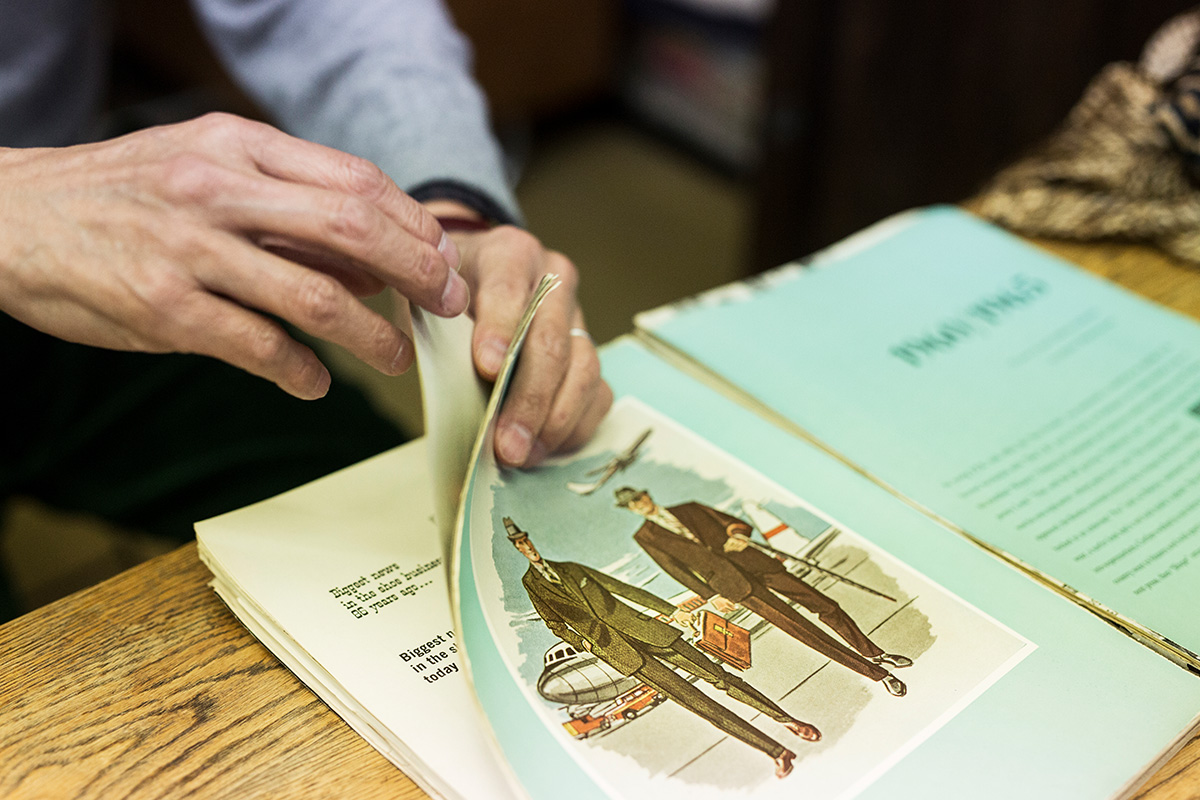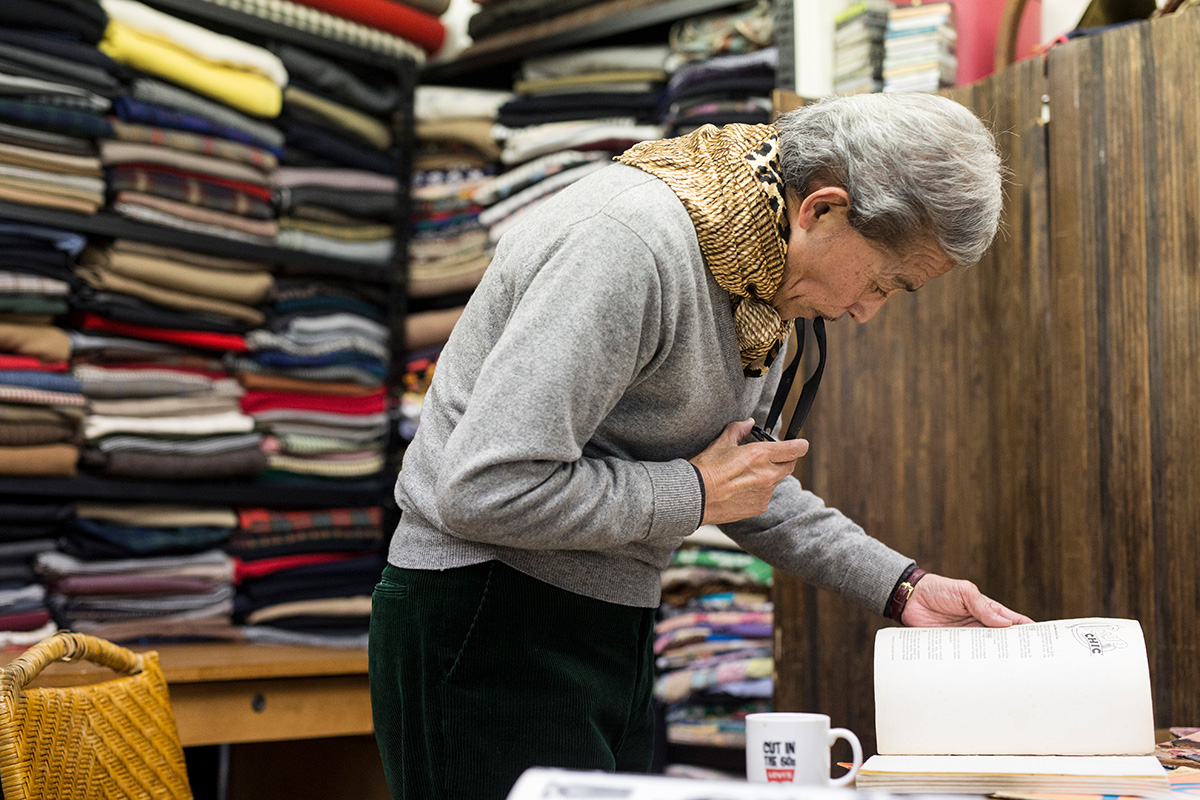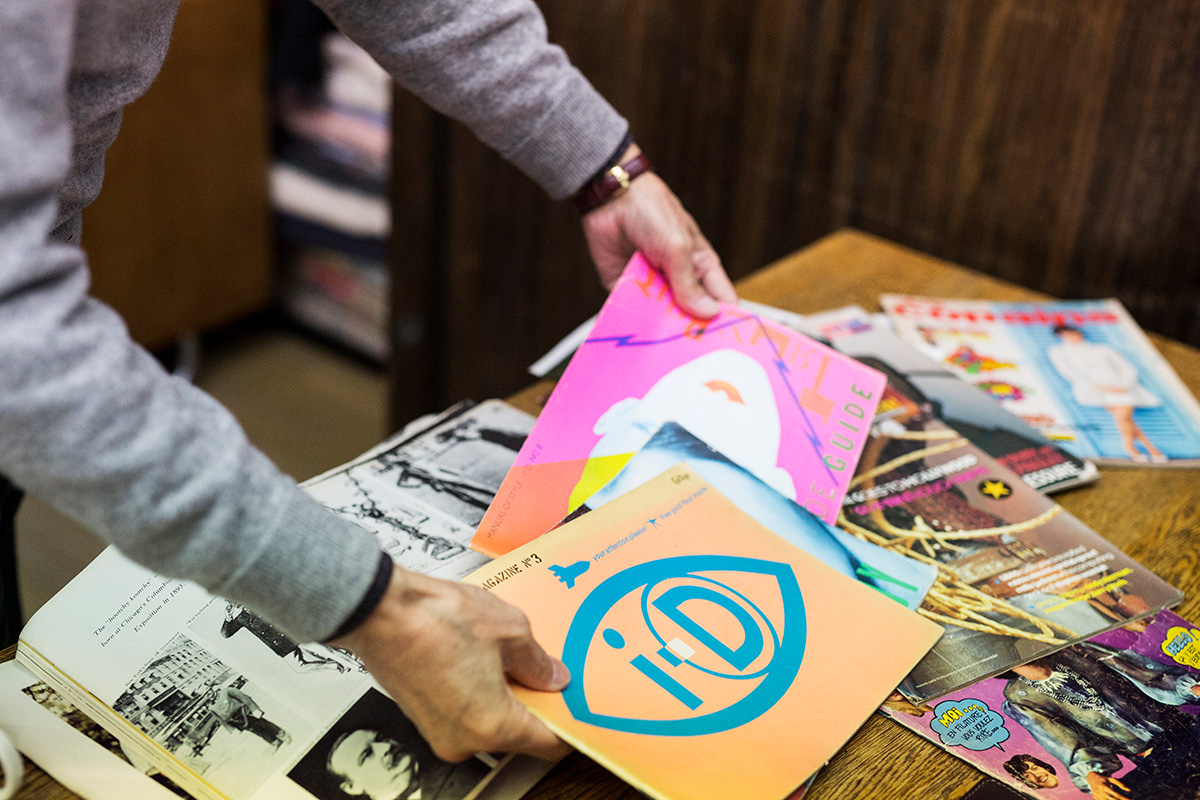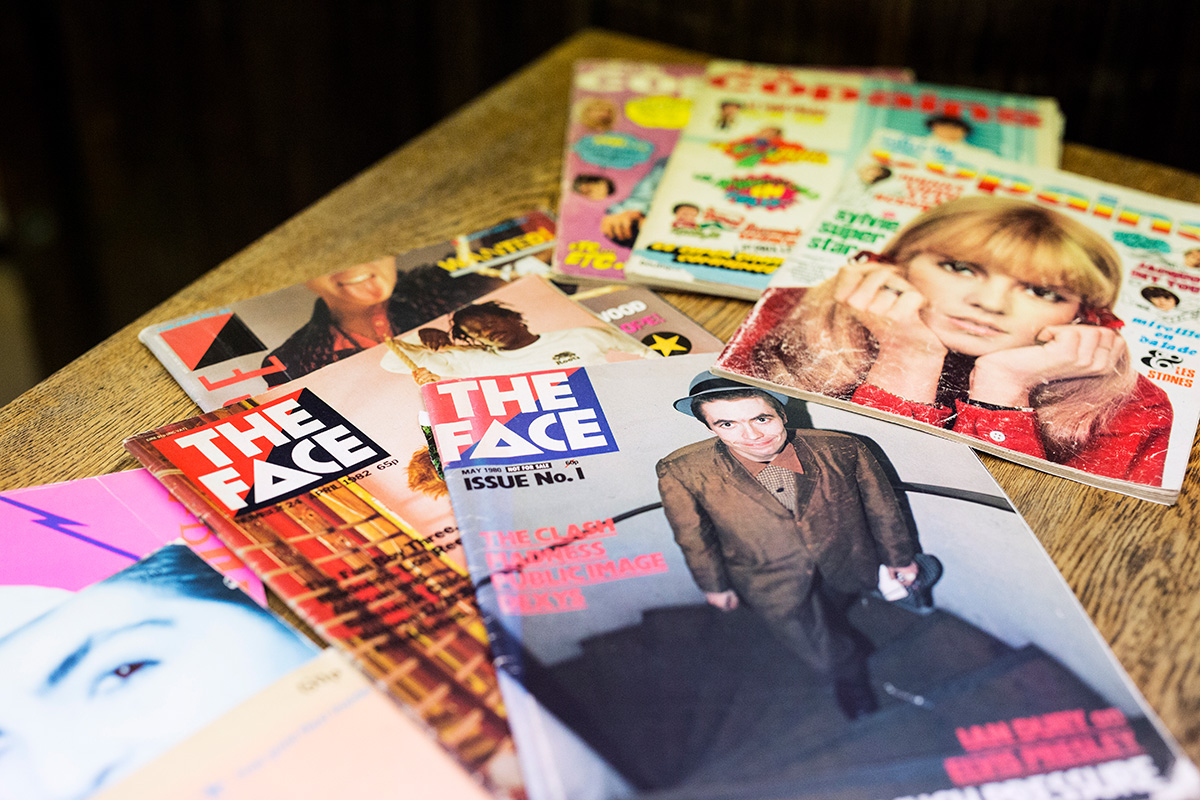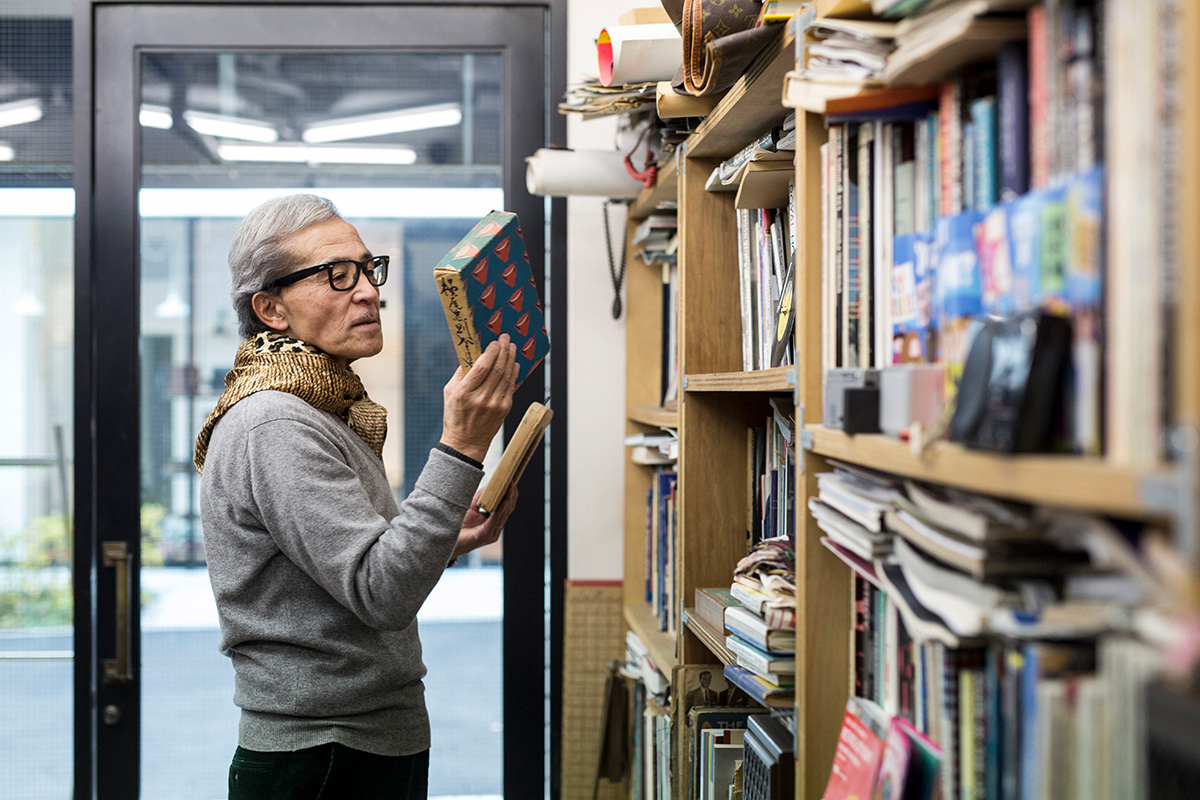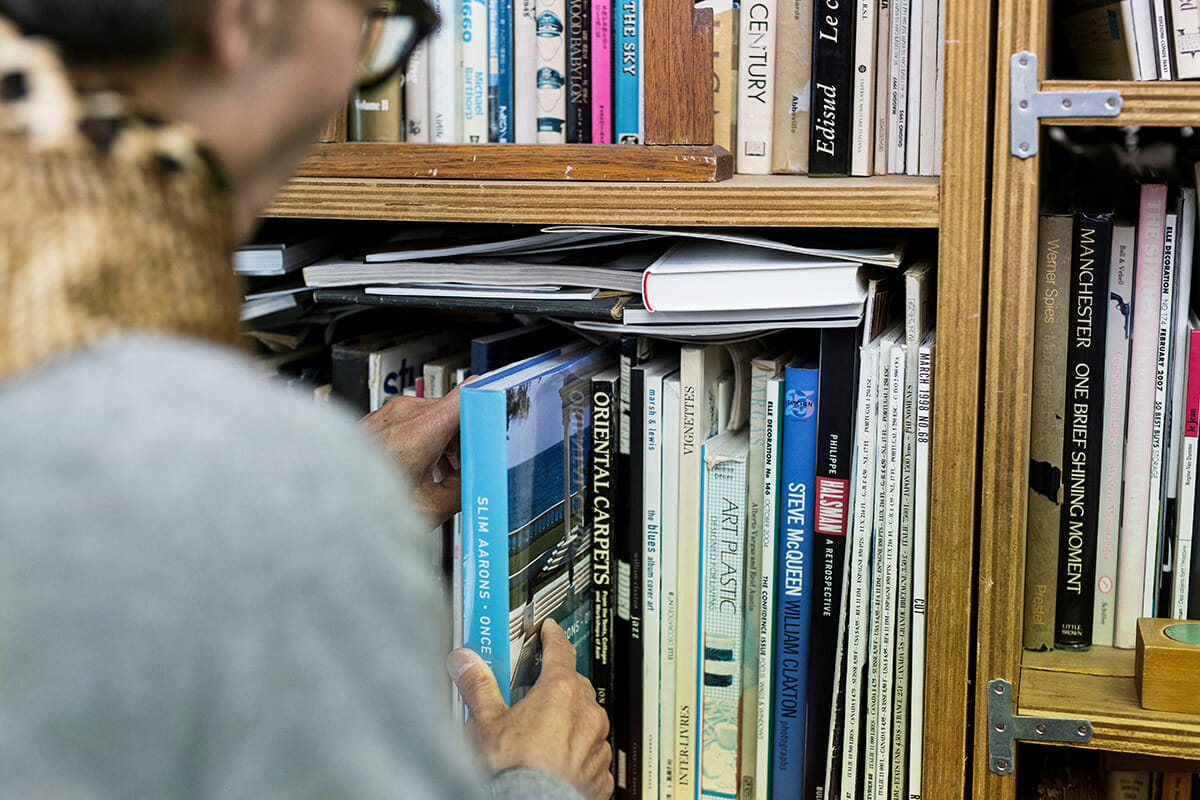-When I look at the variations on the bookshelf, I get the feeling that the "60s" is one of the basics for Saito-san.
SaitoYes, the war ended in 1945, and from the end of the 1950s, people like James Dean began to express youth who rebelled against adults, and this was the birth of youth culture. Until then, young people were supposed to go to school and study diligently, but in the 1960s, youth culture exploded, and the adults could no longer contain it. The sixties were exciting as men's fashion was born and rock stars were born one after another.
How did you spend your time after that?
SaitoI used to go to Europe a lot in the 70's. I used to walk the streets of London and see a lot of punk kids and skinheads. In London, there were many punk kids and skinheads when I walked the streets. When I happened to be in London at the time, I was invited to go to the opening of "SEDITIONARIES" because "Vivienne Westwood's new store was opening. I could go to Italy and get a suit that looked like the pinnacle of sartoria. It was an interesting time when many things were beginning to happen. When I went abroad in this way, I found new and interesting magazines and brought them back to Japan, but there was a time lag of about five years between Japan and abroad at that time.
-In Saito's case, there was no time lag in information because he had visited the area and absorbed information from a variety of books.
SaitoYes. However, although some people like Takeo Kikuchi (founder of TAKEO KIKUCHI) and Rei Kawakubo (founder of Comme des Garçons) who had been going abroad frequently since that time could see the interest, it was not very effective because it did not reach general magazines or the market. So, it was not very effective. Another turning point came around 1975. The first issue of "CHEAP CHIC" was published in 1975, and the first issue of "POPEYE" was published in 1976. This was a major turning point for Japan, and it was a big shock to me that I could be fashionable without having to buy expensive clothes. However, I was already devoted to Italy and wearing sartorial suits at that time. Around the same time, VOGUE UOMO was launched in Italy, and brands such as Giorgio Armani and Versace began to appear. When you look at it this way, there is always a major movement that comes along once every few decades.
